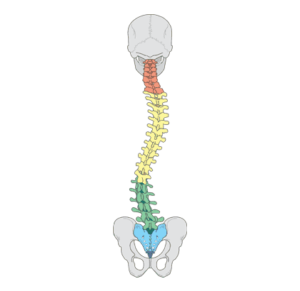What is Scoliosis?
Scoliosis is the presence of an abnormal curvature of the spine. Scoliosis may affect the cervical (upper), thoracic (middle) and lumbar (lower) regions of the spine. The curves, which veer to the left or right, often present in an S- or C-shape. These curvatures may be categorized as non-structural — meaning the curve is temporary and the spine is structurally normal — or structural, meaning that the spine has a fixed curve.
The cause of scoliosis may result from a birth defect, neuromuscular disorder, injury or infection of the spine. Adult-onset scoliosis is rare — most adults develop scoliosis symptoms during their childhood or teenage years, they are likely diagnosed later in life.
Scoliosis may also cause several other spine conditions, such as spinal stenosis (the abnormal narrowing of the spine) and foraminal stenosis (a narrowing of the open spaces in the lumbar spine).

Causes of Spinal Stenosis
Determining the cause of spinal stenosis can be complicated because, while spinal stenosis is the narrowing of the spinal canal, there is usually an underlying spine condition that is causing the spinal canal to narrow. For example, a bulging or herniated disc would cause the spinal canal to narrow in a particular place because the bulging disc has moved out of its normal zone in the spine. In this case, the patient would have spinal stenosis caused by a bulging disc.
However, there are several instances when spinal stenosis is caused by nothing more than the natural aging process. As we age, the ligaments in our spine can become thicker and compressed. Bone spurs may grow on the vertebrae of the spine. Discs in between vertebrae may deteriorate and misalign along the spine. All of these natural aging occurrences can cause the spinal canal to narrow and a nerve root or the spinal cord to be impacted.
Some of the most common spine conditions that cause spinal stenosis are as follows:
- Bone spurs
- Herniated disc
- Bulging disc
- Spondylolisthesis
If you have been diagnosed with any of these spine conditions, you might want to consult your physician about the possibility of your condition causing spinal stenosis.
Scoliosis Symptoms
- Uneven shoulders and/or waist
- One hip that is higher than the other
- One prominent shoulder blade
- Neck and back pain
- Difficulty breathing (in severe cases)
- Numbness, cramps and shooting pain in the legs
Preventing Spinal Stenosis
Since the main cause of spinal stenosis is the general aging process, standard healthy life changes can be an effective way to help prevent spinal stenosis. For example, consider implementing the following habits into your daily life:
- Regular exercise
- Healthy diet
- Comfortable sleep
- Good posture
A regular exercise program, like swimming, yoga, and Pilates, helps develop core strength and allows you to maintain strength and flexibility in your spine. That, matched with a healthy diet, ideal weight, and proper nourishment, is the key to maintaining a healthy spine. In addition, sleeping on a bed that properly supports your spine, as well as practicing good posture and lifting mechanics, can help you avoid and reduce spine-related injuries and conditions.
Safe practices at home and the workplace can help you avoid injuries of all kinds. When it comes to injuries to your back, there are certain activities you should try and avoid, or take precautions against.
If you think you show signs of the condition, or would like to confirm your suspicions that you may have spinal stenosis, we recommend calling us today for a consultation.
If you would like to find out more about your condition and how we can help you, please feel free to contact us. Our team will provide you with a no-cost MRI review* to help determine if you are a candidate for our minimally invasive, outpatient spine surgeries.
Types of Scoliosis
- Congenital scoliosis — This form of scoliosis refers to the abnormal development of the spine in the womb. Spinal bones that become fused together or do not properly form during gestation lead to congenital scoliosis. This type of scoliosis may affect one or all levels of the spine. Because congenital scoliosis symptoms can appear in any level of the spine, it has a wide range of severity.
- Neuromuscular scoliosis — This type of scoliosis is caused by a neurological or muscular disease, such as muscular dystrophy or cerebral palsy. The severity of neuromuscular scoliosis varies due to the unpredictability of treatment options and causes.
Scoliosis Treatment
Many people who developed scoliosis in adolescence have already undergone nonsurgical treatments like bracing. If the condition starts to progress into adulthood, or if the condition is purely adult-onset degenerative scoliosis, symptoms of pain or nerve compression can usually be managed nonsurgically with the following approaches:
- Physical therapy
- Exercise, especially strengthening core muscles
- Nonsteroidal anti-inflammatory drugs
- Epidural steroid injections
Bracing is generally not recommended for the treatment of scoliosis in adults because skeletal maturity has already been reached. Braces can actually be counterproductive for adults because they can weaken the supporting muscles, putting more weight and stress on the spine.
Surgery may be recommended as a treatment of scoliosis for adults when weeks or months of conservative options do not bring relief.